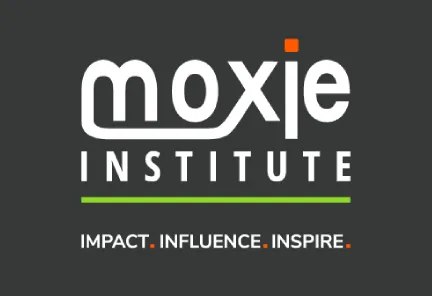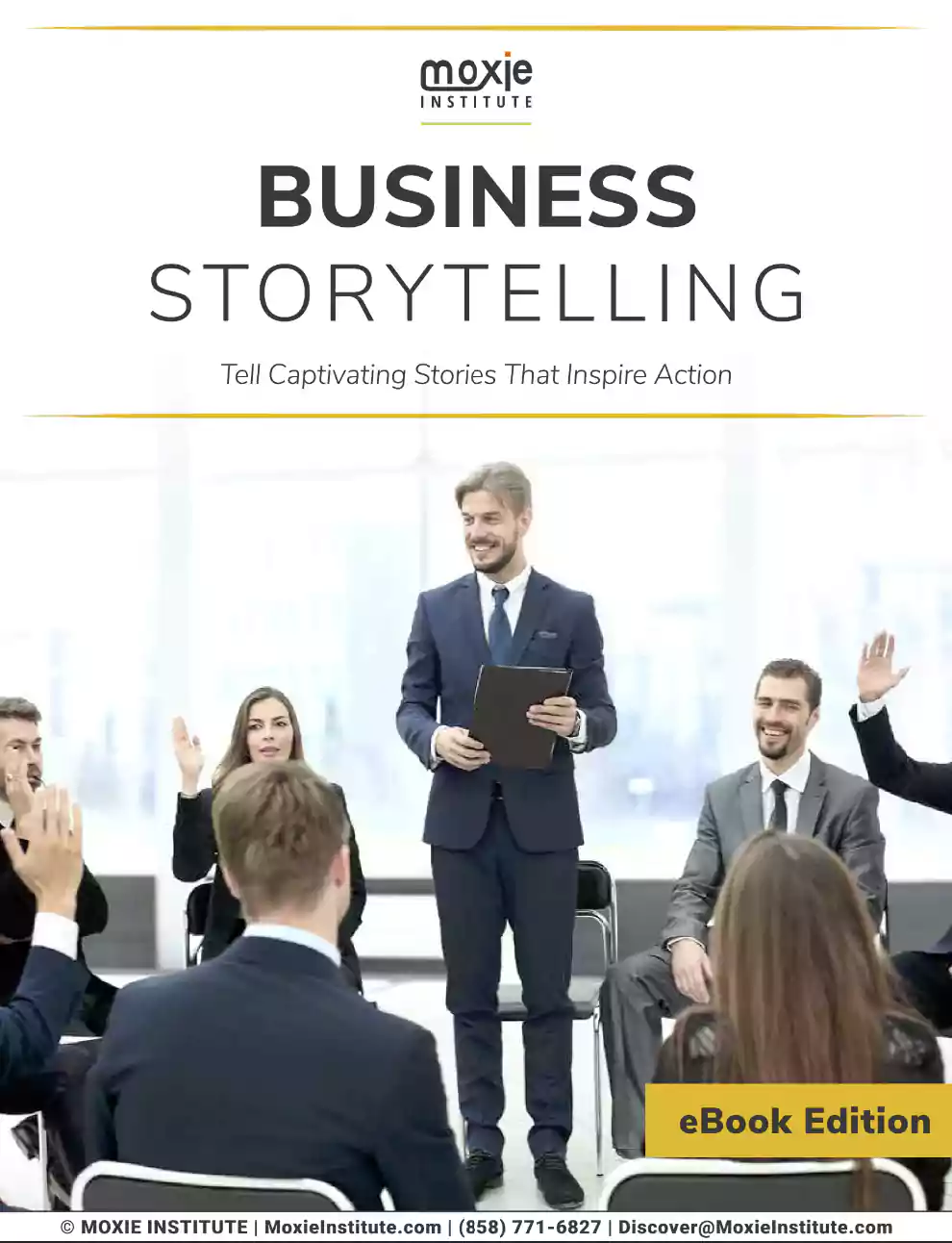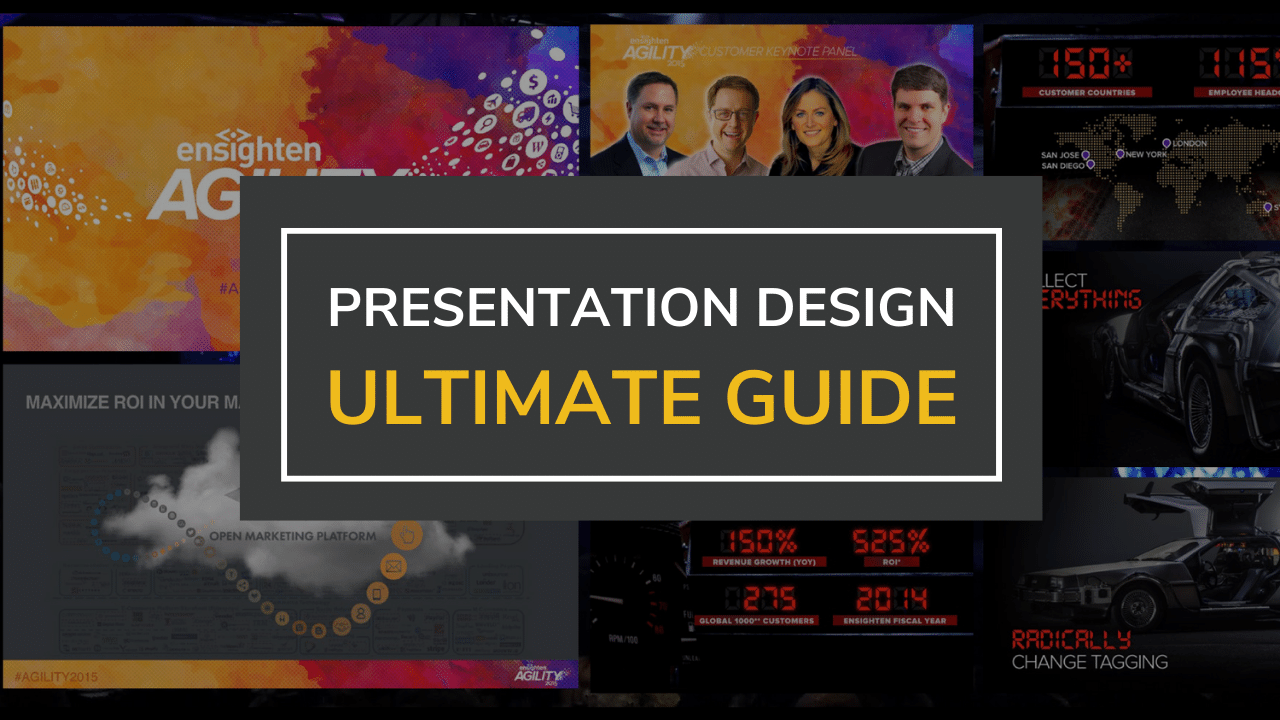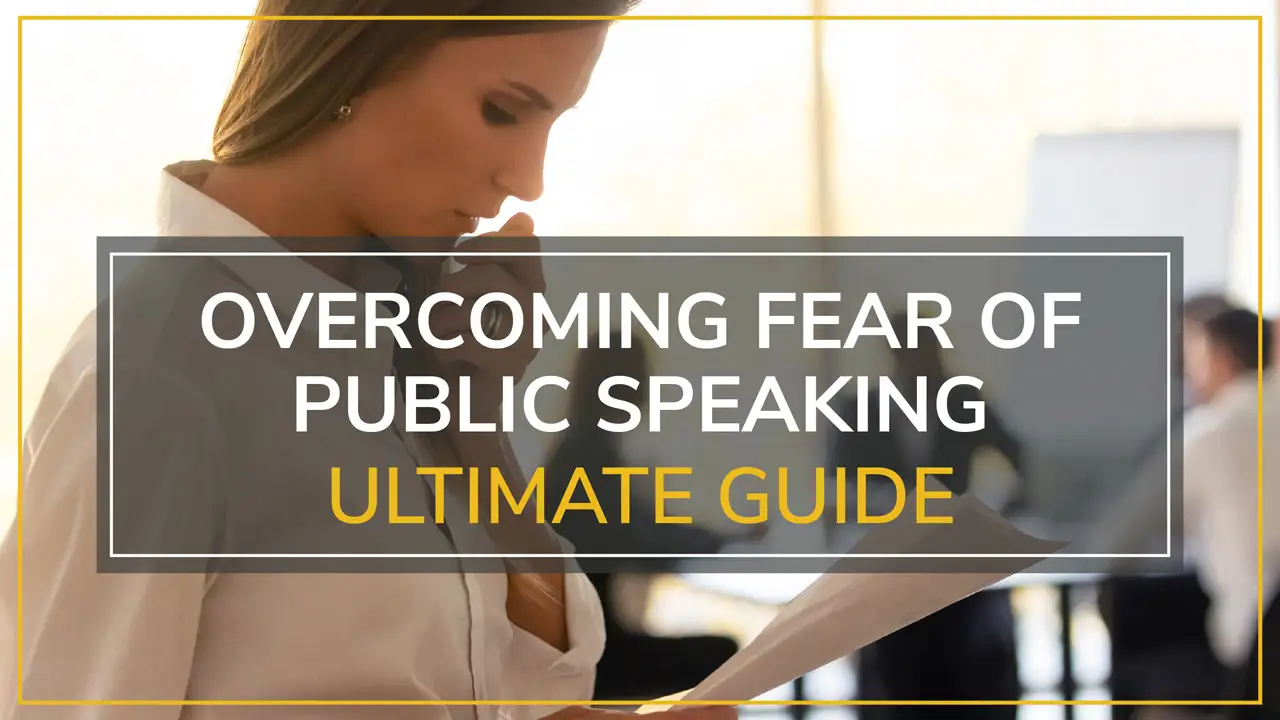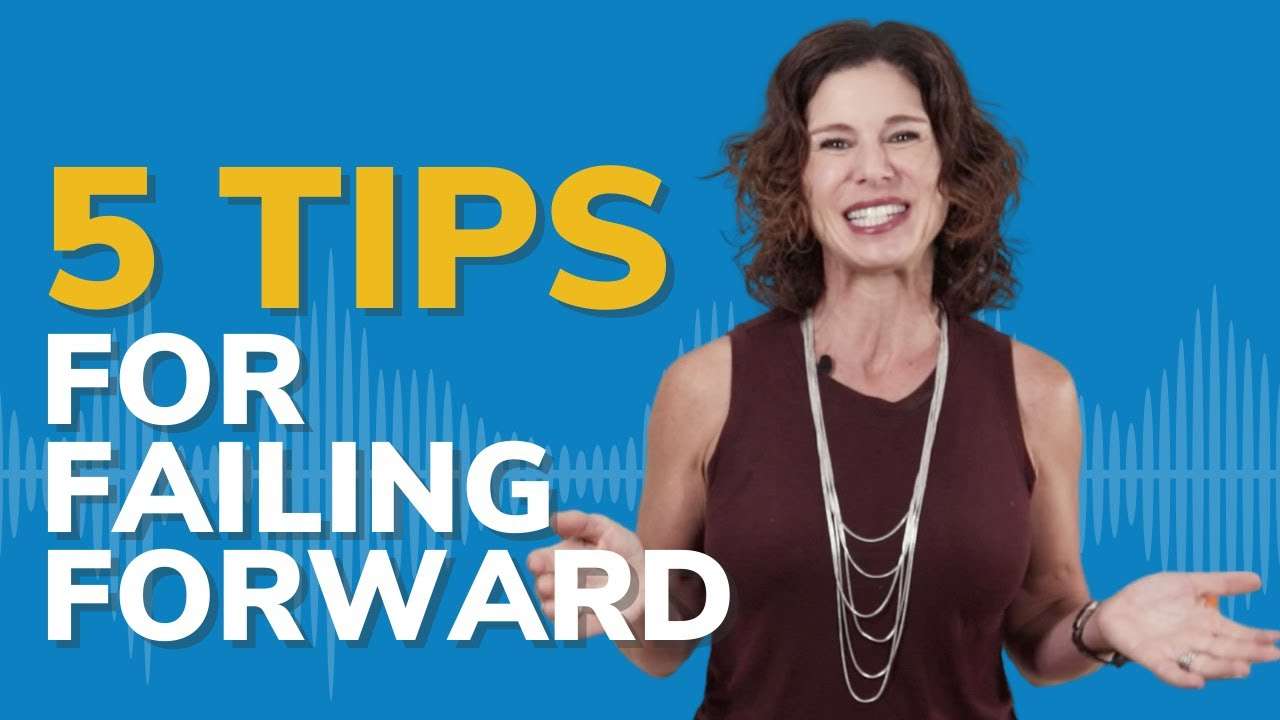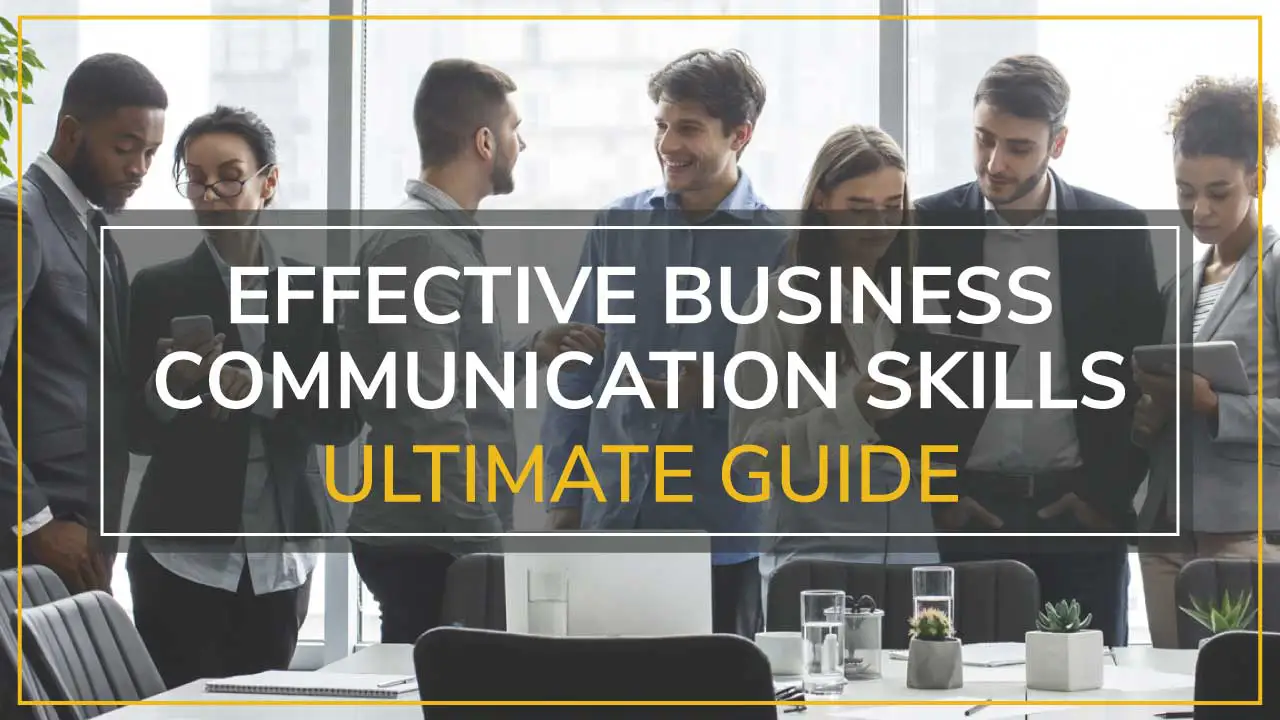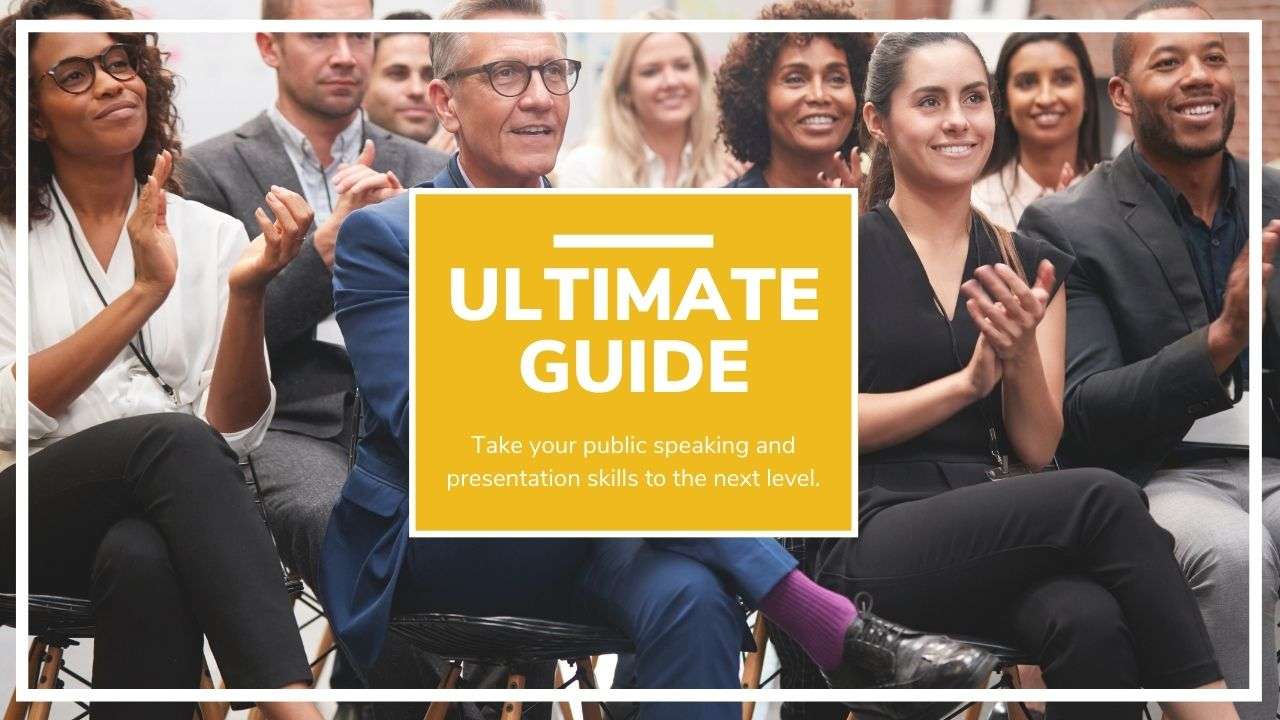Introduction: The Science and Art of Storytelling
Did you ever heard a speaker so mesmerize you that you felt as if their story unfolded effortlessly, carrying you along as you clung to their every word? That magnetic quality is not magic or an inherent gift — it’s a skill we can learn, through science and technique.
Storytelling may well be the most potent means of human communication that we have. By teaching yourself the art of storytelling, you’re hacking into a primal structure of narrative that has been feeding and entertaining humans for millennia. Research at Stanford University has found that stories are up to 22 times more memorable than facts alone. That’s why, years after they’ve forgotten your numbers and spreadsheets, they’ll still remember the fascinating tale you told them.
At Moxie Institute, we have taught the art and science of powerful business storytelling to thousands of professionals in all types of industries. What we’ve learned is that great storytelling is based on certain, learnable structures that can turn even the most number-crunching executive into a captivating raconteur.
In today’s information-overloaded business world, the power to break through the noise with strategic storytelling isn’t just a nice-to-have — it’s a must-have for any leader seeking to inspire action, build empathetic connections, and effect meaningful change. Whether you are trying to raise money, bond with your team, or give a keynote address, there are seven known storytelling tactics that will multiply your influence big time.
This all-inclusive guide builds on our proven, neuroscience-based approach to story and performance, but goes much, much further in its application across a wide range of professional settings. Here are seven key elements that will help your stories go from ho-hum to unforgettable.
Tip 1: Start With a Strong Hook
Your opening matters a lot. According to Microsoft research, human attention has declined from 12 seconds in 2000 to 8 seconds today — a shorter attention span than that of a goldfish. And yet, it also means you have very little time to win your audience over before they check out mentally.
How do our brains engage when we experience an intriguing story opening? The attentional fix: Neuroscientist Paul Zak’s research at Claremont Graduate University reveals that a good story opening releases attentional/motivation-prompting cortisol (the “attention” hormone) jets in the brain that produce focused attention. This type of biological response essentially primes the brain to attend to and remember.
“A engaging opening puts your brain into a neurologically receptive state to anticipation,” explains Dr. Zak. “When done well, this stimulates the reward networks in the brain, the audience quite literally experiences a craving to see what happens next in your story.”
In our work coaching Fortune 500 executives we have witnessed how the right opening can turn an audience cold into an audience getting more after a presentation. For example, we coached one pharmaceutical executive who had low engagement in her technical presentations. She restructured her presentations to start from a patient story that demonstrated the human side of the company’s research, and audience feedback scores shot up 46%.
The Neuroscience Behind a Great Opening
What happens in the brain when we encounter a compelling story opening? According to neuroscientist Paul Zak’s research at Claremont Graduate University, a strong narrative opening triggers the release of cortisol, the attention hormone, creating a state of focused engagement. This biological response essentially prepares the brain to receive and remember information.
“A compelling opening creates a neurological state of anticipation,” explains Dr. Zak. “When done correctly, it activates the brain’s reward circuitry, making the audience literally crave the next part of your story.”
In our work coaching Fortune 500 executives, we’ve seen firsthand how the right opening can transform audience engagement. One pharmaceutical executive we coached was struggling with low engagement during her technical presentations. After restructuring her presentations to begin with a patient story that illustrated the human impact of the company’s research, audience feedback scores increased by 46% and message retention improved significantly.
Types of Hooks That Capture Attention
Drawing on our work training thousands of individuals in storytelling workshops, we’ve identified the types of hooks that are consistently the most effective for capturing an audience’s attention—and holding it.
- The Dramatic Scenario: Start with the action: Dump your reader right into the middle of a tense or exciting moment. For instance: “Pretend you’re on trial to the board of directors and you have five minutes to save your department from being axed.”
- The Unexpected Statement: Challenge an established truth and share an unusual fact. You might also write: “The single biggest mistake most leaders make when communicating change is to begin with the ‘why’ — and it’s costing them their credibility.”
- The Compelling Question: Ask a stimulating question about the topic. For instance: “How would your business change if every person on your team… could explain your vision as clearly as you?”
- The Relevant Statistic: Offer one strong number with context that makes the urgency clear. For instance: “70% of organizational change efforts fail due to a lack of effective communication.” — research done by the Harvard Business School.
- The Personal Connection: If it’s appropriate, share a quick, relatable personal story that proves you’re a real human being. For instance: “I lost out on a $2 million client three years ago because I was unable to articulate our value proposition and how we could apply that to the client’s business — Here’s what I learned from that failure.”
Pro Tip: Match your opening hook to your audience. C-level leaders want to see hard-hitting numbers and business results, while cross-functional teams generally respond better to “what if” scenarios and related questions that map to their daily challenges.
Try It Yourself: The next time you’re about to give a presentation, write three different opening hooks (a question, a statistic, and a scenario). Try them out on a trusted colleague, asking which one most makes them want to hear more.
Tip 2: Craft Well-Developed Characters
Big stories are built around the types of characters that your audience can identify with, cheer for and dream about. In a business book, that might be your customers, your team members, even your company itself — but they have to feel real, three-dimensional.
Character Development in Business Narratives
Unlike fiction, in business storytelling, where character development is crucial, a careful balance needs to be struck between what is true to the person and what aligns with your objectives. Our narrative intelligence study involving over 1,200 business leaders found that stories featuring clearly defined characters are 37% more likely to motivate the listener in the intended way than more abstract narratives.
Here are some of the most effective business characters:
- The Customer Hero: Focus on a Real Customer Who Overcame a Significant Challenge with Your Product or Service
- The Internal Champion: Focus on team members who embody the values of your organization, or found creative solutions to challenges.
- The Leader’s Journey: Share actual personal stories that make the leader vulnerable and show growth and learning (very powerful for building trust).
- The Organizational Persona: Position your company or team as an entity with values, problems, and a mission beyond making money.
- The Market Force: Personify market patterns, technological shifts, or industry upsets into characters that exert pressure or provide opportunities.
If you want to create characters for your business stories: specificity, relatability, and motivations.
- Specificity: Draw on real details that make the character feel three-dimensional (though anonymize specific details when necessary).
- Relatability: Make sure that you know your audience can imagine themselves, or someone they know, as the character.
- Motivations: Make the aspirations and reasons of your character known.
A healthcare executive we coached found herself unable to get a big-ticket new patient monitoring system through the budget process. Instead of going through a technical spec, we had her build her presentation around a story — a specific nurse named Sarah — who was losing 40% of her day doing manual documentation instead of caring for patients. In choosing Sarah as the protagonist—with her personal struggles, professional focus and her promise of helping her patients—the executive made an emotional connection with the budget committee. The result? Full funding approved.
Making Your Audience the Hero
If you want to tell better stories on stage, here’s a pro-tip from the pros: Cast your audience as the hero of the story. This strategy, which we call “hero projection,” boosts engagement and resolve.
When you are writing stories based on audience-as-hero:
- Recognize their challenge: Let them know you realize the exact prickly problem at hand.
- Make your idea the guide: You are not the hero of the story, your solution is the help that allows the customer to succeed.
- Picture their success: Describe in vivid detail what they will have accomplished when they’ve successfully implemented your strategy.
- Tackle objections head-on as part of the story: Addressing and overcoming potential objections within the story arc.
Key Insight: When listeners recognize themselves in your story, they don’t assimilate it as a narrative about somebody else; they experience it as a personal simulation, and this has been shown to multiply retention and persuasive power by orders of magnitude.
Tip 3: Create Meaningful Conflict
No conflict, no tension, stories die on the vine. Brain activity of the audience falls drastically when there is no tension in a story, according to research by Uri Hasson, a Princeton neuroscientist. Conflict is what causes audiences to sit up and take notice, and become emotionally invested in the resolution.
The Psychology of Tension and Resolution
This psychological principle of “cognitive closure” is why we are drawn to close open tensions. Whenever we come across an unresolved issue or a problem, our brain “hurts” and only finding a solution can make the pain go away. Master storytellers exploit this human predisposition by:
- Introduce a tension or problem: Give your reader a relatable problem or challenge that needs to be fixed.
- Raise the stakes: Explain why the issue in dispute matters and what the consequences would be if it is not resolved.
- Delaying resolution: Strategically postpone the solution to maintain engagement.
- Delivering satisfying closure: Give us an ending that’s satisfying but also feels well-earned.
In our practice of executive coaching, and from our work with professional clients around the world over the past few decades, we see the biggest mistake people make is to be too quick to resolve tensions. When they hurry to the answer, they unconsciously rob their audience of the psychological pleasure that comes from solving a problem.
Ethical Conflict Creation in Professional Settings
In business settings, conflict needs to be approached with finesse and sincerity. Our advice on how to build meaningful conflict without manipulation or contrivance:
- Stick to real problems: Center your conflict around actual issues that your audience acknowledges and cares about.
- Stay clear of manufactured drama: Do not indulge in creating false illusion for its dramatic value.
- Address emotional and rational tensions: Speak to the heart and to the mind by focusing on both rational and human dimensions of the conflict.
- Present multidimensional problems: Recognize that most business problems transcend its multiple dimensions and players.
- Frame conflict as opportunity: Reframe tensions as opportunities to innovate, to become better, or to showcase values, rather than as purely negative experiences.
Conflict Framework for Business Storytelling:
Conflict Type | Example | Best Used For |
Person vs. System | A group working through the red tape of getting an innovation in place | Change management, process improvement |
Person vs. Circumstance | A manager at a company faced with a surprise in the marketplace | Crisis Response, Agility, Resilience |
Person vs. Self | An executive casting off limiting beliefs to reach an ambitious goal | Leadership development, personal growth |
Person vs. Person | Balancing teams with disparate business goals | Cooperation, conflict resolution |
Person vs. Technology | New digital tools being adopted by employees | Digital transformation, innovation adoption |
Expert Insight: In coaching a technology executive to prepare him for a make or break product launch, we encouraged him to craft his pitch around the tension between user dissatisfaction with current offerings. Rather than just immediately positioning his product as the hero by addressing those pain points, he dissected them, even sharing videos of real users who are flummoxed by competitor’s products. This approach generated so much tension that by the time he presented his solution, the audience was already psychologically prepared to accept it — resulting in 3X the pre-orders they expected.
Tip 4: Structure Your Story Strategically
It doesn’t matter how strong your characters and conflicts are; your story will suck without a coherent structure. Structure is the invisible hand that moves your audience through an intellectually and emotionally rewarding trip.
Classic Story Structures That Resonate
True, there are a million storytelling models on the market, but our research and experience dealing with thousands of business pros have pointed to the following structures as particularly effective in professional settings:
- The Hero’s Journey (with a business-twist)
- Ordinary World: What is your current state of affairs?
- Call to Challenge: What is the issue or the opportunity?
- Resistance: What is preventing you from taking immediate action?
- Mentor/Solution: What new and exciting stuff have you learned?
- Crossing the Threshold: How do you decide to jump in?
- Tests & Trials: Navigate implementation challenges
- Transformation: What has changed on the table?
- Return: Reality check, application in social settings
- The Problem-Solution Framework
- Clearly state the problem
- What are the implications of the problem?
- Clearly state the criteria that define and verify any solution to the problem
- Introduce your primary solution
- Provide evidence in support of that solution
- Call to a specific action
- The “What Is / What Could Be” Contrast
- What is the present reality looking like?
- What do you dream your reality will look like?
- What does the bridge between the two realities look like?
- What are your first steps to the other side?
- The Nested Loop
- Begin a broader context story
- Take a break to tell a related side-story
- Then return to the main story and finish that
- Connect both stories to your key message
Adaptable Frameworks for Different Scenarios
The best story structure depends on what you’re trying to do and everything else around it. Here’s what our work with clients across industries tells us about what businesses should do in a variety of sectors.
For Persuasive Presentations (Pitches, Proposals) The Problem-Solution model Apply the Problem-Solution method and spend 60% of our time presenting the problem before presenting the solution. According to research at Stanford Graduate School of Business, an audience is 60% more likely to take in a proposed solution once they’ve fully absorbed the problem.
For Leadership Communications (Vision, Change) The What Is / What Could Be is a strong cognitive contrast. And as behavioral psychology has taught us, it’s by leveraging the principle of cognitive dissonance that this way of doing things can lead to change.
For Technical or Complex Topics Another fast and easy tool is called Nested Loop and it helps you to circle between specifics and generalities in a way that your information becomes easier to understand and remember.
For Team Building and Culture Development This modified Hero’s Journey can be very effective, as it acknowledges the struggle but helps to create a group mythology around the transformation.
Quick Structure Decision Guide:
If your goal is to… | Use this structure: | Focus most on this element: |
Drive urgent action | Problem-Solution | The cost of inaction |
Build long-term vision | What Is/What Could Be | Vivid future state details |
Explain complex concepts | Nested Loops | Concrete, relatable examples |
Inspire cultural change | Hero’s Journey | Joint struggles and victories |
Establish credibility | Personal Journey | Real-life Lessons from Real Traders |
Real-World Application: While coaching the CEO of a manufacturing corporation on a massive digital transformation announcement, we applied the “What Is/What Could Be” model to show employees the stark differences between current manual procedures and future automated processes. By investing time in recognizing what was really difficult in the current state before sharing what the vision for change could be, resistance among employees was way lower than in previous change efforts in the same company.
Essential Element: No matter what structure you decide is right for you, make sure that your story incorporates the “transportive details” neuroscientists say are key to every good story: specific, concrete details that help your audience experience the story in their minds rather than just processing it in their minds.
Tip 5: Engage Multiple Senses

The ones that are best remembered will produce a multisensory experience in the minds of those you’re trying to engage with your message. Studies at the University of California that examine the science behind storytelling have found when people hear character-driven, sensory stories, their brains often light up like the storyteller’s, that is the same parts of the storyteller’s brain engage as the listeners would if they were actually experiencing the events. Described as “neural coupling” this is why when storytelling with a focus on the senses our memories are embedded more deeply than in abstract conversation.
Sensory Language in Professional Communication
We tend to shy away from the use of sensory language in our business writing for fear of not sounding professional. Our experience working with executives in various sectors, though, suggests that with the right sensory language, it is possible to remember a message while maintaining credibility.
To accomplish this you want to add sensory dimensions such as:
- Advance your central message
- Sound like yourself in your own words
- Tailor to your practice context
Drawing from our examination of high-performing TED talks and executive presentations, here’s how to properly implement each sensory dimension:
Visual Language
- Play with color, forms, and visual contrast
- Make distinct senses of place
- Add movement and change
- Example: “The color palette of the crisis dashboards changed from an obfuscating rainbow of alerts to three focused panels, each glowing green.”
Auditory Elements
- Allude to real songs and conversations
- Change it up for rhythm and cadence
- Include dialogue (if necessary)
- Example: “There was a hush at the quarterly meeting when the revenue numbers came up — you could hear people holding their breath.”
Kinesthetic Impressions
- Verbalize Sensations and Movements
- Compare gravity, material feel, and temperature
- Add more gesture and posture
- Example: “Their shoulders actually dropped as they went from resisting to accepting the new way.”
Emotional Sensations
- Identify and describe certain emotions
- Crossover between bodily sensations and emotions
- Recognize the swings of emotion
- Example: “Anxiety was replaced by the unlikeliest boost of confidence as the team welcomed the challenge.”
Creating Vivid Mental Images
The human brain reads images 60,000 times faster than text. You can significantly increase absorption and memory of what you say by painting vivid mental images with your words.
Some ideas on how to create powerful mental images:
- Concrete Comparisons: Use familiar objects or experiences as reference points
- Instead of: “The new system is more efficient.”
- Try this: “The new system is analogous to replacing a twisting dirt road with a four-lane highway.”
- Scale Transformations: Aid the audience in visualizing abstract numbers
- Rather than: “We handle 3 million customer interactions a year.”
- Try: “Our support team has enough conversations with customers each year to fill Madison Square Garden 150 times.”
- Before/After Contrasts: Create clear visual progression
- Instead of: “The new process is more efficient.”
- Try: “Imagine going from a desk with 27 different paper forms to a single screen with three big buttons.”
- Process Visualization: Get abstract procedures to become visible, understandable and tangible
- Instead of: “The process is easy.”
- Try: “What may have previously resembled a plate of spaghetti, with requests bouncing back and forth between departments, is now firing in a straight line from request to approval.”
Sensory Language Exercise: For your next talk, list three talking points. Write a description of each one, involving at least two senses if possible (sight, sound, movement). Practice these descriptions with a buddy to make sure they induce colorful mental images that buttress your key message.
Field Insight: I got a chance to work with a cybersecurity company who had a hard time describing how their sophisticated threat detection system worked, we gave their sales people a set of senses-rich language they could use to describe their technology: “Our software quietly hikes your network in the same way white blood cells, instantly identifying and neutralizing threats and not allowing them to spread.” This physical comparison grew future client comprehension by 40% and also cut their sales cycle severely.
Tip 6: Deliver With Authentic Emotion
Emotion is the currency of connection in a story. This emotional connection is far more relevant to decision-making than rational arguments alone, according to research from Harvard Business School. Yet on the job, plenty of leaders shy away from infusing their stories with true emotion, worried doing so will make them seem less authoritative.
The Balance of Emotion in Business Storytelling
Emotion-rich storytelling in business. The real secret to good emotional storytelling in business? It’s not about drama or manipulation — it’s about being genuine in how you express your message. Through our work with thousands of executives, we’ve come to understand the best way to manage emotional delivery in various professional settings.
The Emotional Authenticity Framework:
Context | Emotional Approach | Example |
Leadership Vision | Balanced belief and hope | “The bad news is that I’m very worried about our place in today’s market, and the good news is that I’m optimistic about our ability to be a new company.” |
Crisis Communication | Confident urgency | “I don’t want to in any way diminish the seriousness of this challenge, but I have total confidence in our ability as a country to meet this challenge together — and to rise to meet it together.” |
Technical Presentation | Moderate enthusiasm for impact | “The data here isn’t the coolest thing to me, it’s what the data means for actual users of our product.” |
Sales/Persuasion | Genuine belief with empathy | “Having tackled this situation head on in my own organization, I know why you’re reluctant — and that’s exactly why I’m so certain this will work.” |
Research-Based Insight: Based on research from the Center for Neuroeconomics, learning to exhibit and articulate true emotions will allow audiences to pick up on authenticity purely through micro-expressions and further variation in tone of voice—neither of which can really be faked. And that’s why you can memorize “emotional” scripts all day and never deliver a human-to-human moment, but when you’re truly committed and fully convicted it can be hugely compelling.
Techniques for Emotional Authenticity
Now, from our performance psychology work with leaders and professional speakers, here are the best ways to experience and communicate authentic emotion in your stories:
- Personal Connection: Find your personal way in to the material. Simply ask: “What is it about this message that personally matters to me?” This naturally adds to more powerful delivery because you genuinely care.
- Specific Emotional Vocabulary: Use specific emotion words instead of vague ones.
- Not: “Previous version did not meet the needs of customers.”
- Try: “Customers were frustrated and left stranded after the software crashed because of a mid-project system update.”
- Strategic Vulnerability: Instead, pick and choose which challenges or mistakes are relevant to share—ones that show growth, or that were mistakes from which you have learned something. Studies have shown that the right vulnerability can boost perceptions of authenticity and how much the audience trusts you.
- Contrast and Variation: Varying your emotional notes in your story adds texture. A story that is all one emotional chord never rings true. Inflect your narrative in the same way as you inflect your delivery.
- Physical Anchoring: Employ slight, purposeful shifts in stance, placement, and gesture to anchor an emotional shift in your story. This trick, stolen from performance psychology, will allow you and your listeners to experience the emotional journey in real time.
Expert Insight: While preparing a banking executive for a high-stakes digital transformation presentation, we found that she was concerned about coming across as “too robotic” despite standing behind the message with fervor. We tried not to layer in the performative emotion, but to mine with her her own experience of that work and the impact those changes had on her personally. Now, mentally, reinvesting in those moments about delivering the results really brought out her natural emotion. Her authentic approach was much more successful in garnering support for the measure than the more technical approaches of the past.
Practical Application: Determine the emotional heart of your next business story. What is the underlying human emotion in play — pride, frustration, hope, relief, accomplishment? If identified then you can connect to this element within yourself by having your personal experiences about the subject. This true foundation will automatically affect the way you speak, the look on your face and how you move as you don’t need to “act.”
Tip 7: End With a Powerful Call to Action

If it doesn’t move your audience to some sort of meaningful action, even the most clever story is going to fail. The end of your story is your chance to turn engagement into action. Based on the findings of the behavioral psychology study, clear instructions will be best received by an audience if the audience has just viewed an emotionally-engaging story.
Crafting Memorable Conclusions
Your closing fulfills two important roles; it reinforces your main argument and calls you to act. After analyzing hundreds of high-conversion presentations and speeches, here’s the structure that has worked best for our students’ conclusions:
- Callback Reference: Echo your start to create a satisfactory circular narrative
- Message Crystallization: Whittle down your central idea into one memorable line
- Benefit Reinforcement: Be sure to tell them “what’s in it for them”
- Specific Request: Please tell us in no uncertain terms what you want us to do
The best conclusions answer these audience questions:
- What was all this, at its heart?
- And why does it matter to me in particular?
- What should I do next?
- What if I do that next?
Research-Based Insight: Research in cognitive psychology shows that people remember and act on the information they receive at the end of a communication experience (“the recency effect”). This makes your conclusion about 3X more likely to result in action than points you made in the middle of your talk.
Inspiring Next Steps
The contrast between lackluster, forgettable calls to action and ones that produce results comes down to specificity, ownership and timeline specificity. Best practices we have observed with sales and leadership teams include the following:
Characteristics of High-Impact Calls to Action:
- Concrete and Specific: Be specific about what you want done.
- Not: “Think about doing these things.”
- Try: “Choose one department in which we will pilot this approach in the next 30 days.”
- Appropriate Scale: Make sure the request fits your persuasive equity and relationship
- For new relationships: Ask for tiny commitments at first
- As the relationship becomes more serious: Request to make it official
- For high-authority offers: ask audacious, transformative offers
- Clear Ownership: Who needs to do the thing.
- Instead of: “We’re going to do this soon.”
- Example: “I’m challenging every team leader in this room to point to three processes where there might be some opportunity for this way of doing things to add value between now and when we meet again.”
- Defined Timeline: Determine the moment when action should take place
- Not this: “Let’s go ahead with this plan.”
- Suggest: “I will send the proposal tomorrow morning and want your decision by Friday at 3 p.m.”
- Connected to Story: Relate the required action to the story
- Instead use: “Let’s implement this new system.”
- Attempt: “Like Sarah when her entire team’s performance was transformed with her adopting the approach, so could you remove the frustrations that we have discussed today.”
Strategic Application: We worked with a healthcare technology company that couldn’t turn interest into action following their sales meetings. By reframing their conclusion to include a “small yes” (i.e., agreeing to an assessment of at least 30 minutes of their workflow), rather than trying to get them to buy more stuff now, they grew conversion rate by 47%. This relatively small deposit turned into momentum that shaved off a ton of time from their typical sales cycle.
Action Step Progression: If the decision is a tough one or if you’re asking someone to make a sizable leap, make the call to action a series of increasing actions and not just a big request:
- Start with a Small YES / Easy YES
- Or an information retrieval or judging step
- Pilot or trial restrictions and experiences
- All in with defined success metrics
Closing Technique: Close with a forward moving question that assumes action and stimulates a positive thought: “What’s the first improvement to your team’s performance that you expect to see when applying this model?”
Common Storytelling Pitfalls to Avoid
These common traps can even trip up the most skilled communicators and detract from their ability to tell a compelling story. Over the years, we have coached thousands of professionals, and we have listed the most common storytelling mistakes and how to avoid making them:
Pitfall #1: The “So What?” Story The Problem: You tell a story that isn’t related to your audience’s focus and problems.
The Solution: Question impetus: Before adding any story to your coverage, you should ask yourself the following question: “Why should my particular audience care about this story?” Relate each story directly back to your audience’s objectives, challenges or aspirations. Make the relevance explicit if the link isn’t readily apparent.
Real-Life Example: A pharmaceutical executive was sharing patient success stories that her R&D team said they did not find compelling until she changed the focus of the stories to emphasize how each one reflected the particular scientific achievements that the researchers had accomplished.
Pitfall #2: The Detail Overload The Problem: You include so many details that the main point is obscured by extraneous information.
The Solution: Pinpoint the 2-3 most crucial elements and get rid of everything else. Remember, your ambition here isn’t comprehensiveness but clarity and impact.
Red Flags: If you catch yourself saying “let me give you some history” or “to tell you exactly what happened,” you probably veer into too much detail.
Pitfall #3: The Missing Stakes The Problem: Not Clarifying Why the Story Mattered — Or What Was at Risk.
The Solution: Explain concretely what would have been lost or gained in your story. No stakes, no emotional investment from your audience. Ask yourself: “What’s the worst that will happen if the hero does nothing?”
Expert Insight: In coaching a tech leader we found that his innovation stories weren’t sticking because he never conveyed what would happen if he didn’t introduce change. Because as soon as he started to describe what the company would be losing to competitors if it didn’t move forward with those innovations, his scores of engagement for the presentations shot up by 64 percent.
Pitfall #4: The Inauthentic Narrative The Problem: The sharing of stories where it’s clear that they are a stretch, they’re exaggerated, or simply don’t feel authentic to your life.
The Solution: Only tell stories that you personally connect to and believe in: Audiences have great big authenticity detectors in their heads, and if your story feels manufactured or false, they will run away.
Key Practice: Every story you think about telling, ask: “Could I tell this as comfortably, as confidently, if someone randomly asked me more questions about it.”
Pitfall #5: The Unresolved Story The Problem: We do not complete the story or learn.
The Solution: All business storytelling should go full circle with clear results and implications. Clarify the resolution and what conclusions you expect your audience to draw, rather than assuming that they will do so on their own.
Practical Check: After you’ve written a story, pose this question to a colleague: “What do you see as the key takeaway from the story?” If the answer they get out of the question doesn’t satisfy your intent, your resolution is still weak.
Pitfall #6: The All-Perfect Narrative The Problem: Providing narratives where people explain how flawlessly their project goes without any bumps along the way.
The Solution: Offer real obstacles and doubts. Audience members will also connect on a deeper level with stories that admit struggle and show resilience than with scenarios of outright, frictionless success, psychologically speaking.
Alternative Approach: If you are reluctant to share challenges within your organization, share a de-identified industry example or a “hypothetical scenario” to achieve the same learning outcome.
Pitfall #7: The Jargon-Filled Tale The Problem: You bury your story under technical terminology and industry jargon that distances you from your audience rather than inviting them in.
The Solution: Stick to simple language that relates to the “bodies and behaviors of people” and not the technical systems. Reserve jargon for when it’s absolutely critical to the story.
Expert Technique: Formulate a “jargon replacement list” so you can come up with plain-English alternatives to the most commonly used technical words in your industry.
Key Insight: Though the right story can make your message much more likely to get attention and be remembered, we find in our executive coaching practice that most people can make a great leap forward in their storytelling abilities just by halving the story, focusing more on emotional connection and less on getting into every factual detail, and making sure every element of the story supports the central message.
Your Storytelling Action Plan
Create game-changing communication with this 30-day plan of action that will help you systematically sharpen your business storytelling skills.
Week 1: Story Mining & Collection
Days 1-3: Story Inventory
- Record 5-7 significant experiences from your career that have provided you with some key learnings
- Strike 3-5 customer/client stories that tell the narrative of the impact your organization makes
- Note 2-3 industry examples (successes/failures) with good insights
Days 4-5: Story Selection & Development
- Select your three most compelling narratives by relevance and significance
- Sketch each in the form of the Hero’s Journey
- Identify the main idea and significance for each story
Days 6-7: Feedback Gathering
- Share a story with a trusted colleague
- Request feedback on engagement, clarity, and impact
- Refine based on input
Week 2: Structural Mastery
Days 8-10: Framework Application
- Select the best structure for each one of your three stories
- Write out very detailed outline using your selected structures
- Spot the emotional arc of the story and polish it
Days 11-12: Hook & Conclusion Crafting
- Draft three distinct opening hooks for each story
- Write strong closings with concise conclusion statements
- Try out different versions on small audiences
Days 13-14: Sensory Enhancement
- Flesh out the scenes with your senses — ideally, you should be able to basically smell, taste and feel just about everything by the time you are done reading all the stories
- Imagine key moments vividly in your mind
- Remove generalities and replace them with specifics
Week 3: Delivery Refinement
Days 15-17: Practice Protocol
- Record yourself as you tell each tale
- Review your recordings for precision, flow, and interest
- Uncover Your Innate Talents for Storytelling
Days 18-19: Physical Presence
- Practice with calculated moves to bring impact to key moments
- Develop purposeful movement patterns for longer stories
- Fine-tune facial expressions to emotional nuances
Days 20-21: Feedback Integration
- Pitch your stories to various segments of the audience
- Get actionable feedback on content and delivery
- Do some fine tuning depending on feedback
Week 4: Implementation & Refinement
Days 22-24: Context Adaptation
- Adapt your stories to a variety of business situations (presentations, meetings, conversations)
- Make abridged versions for the time strapped
- Make some expanded versions for when you need more information
Days 25-27: Integration Strategy
- Find opportunities to plug in your stories safely in the future
- You’re going to want to learn to transition into stories seamlessly — contextualizing anecdotes in a way that doesn’t sound like the beginnings of a rambly story
- Get better at incorporating stories into data-infused or heavy content
Days 28-30: Measurement & Iteration
- Define the measures of effectiveness for your stories (engagement, recall, impact)
- Gather input after real-world use
- Improve your method by using results
Key Performance Indicators: Your audience engagement, message retention, and action taking will all be sky-rocketing by the end of this 30-day plan. By applying these techniques uniformly (as we have found to be the case, in our work with executives across many industries), we generally observe a 40-60% rise in message retention, which in turn drives a 30-50% gain in persuasive impact.
Strategic Advancement: When you can competently manage these basics of storytelling, schedule a storytelling training session to sharpen your storytelling skills for targeted high-stakes scenarios.
Frequently Asked Questions
What makes business storytelling different from other types of storytelling?
Business Stories Are Not Entertainment nor are they Fables. Business storytelling is different from entertainment or literary storytelling in several fundamental ways. 1) Business stories need to be linked to specific strategic outcomes, not just entertaining narratives. Second, they have to navigate the line between the emotional response and professional aspect. 3) they must be able to scale to a wide range of time constraints and situations, from the instantaneous interaction of hallway contribution to a full-hour keynote presentation.
Effective business stories According to a study published by the Harvard Business Review, effective business stories should have the following elements: that they are relevant to an audience issue that the story relates back to the corporate mission that the lessons in the story can be applied to immediate problems and concrete actions that the audience can take away. Business storytelling is NOT creative storytelling So the way you tell stories in business should be clear, impactful writing, rather than creatively written storytelling.
In our work training thousands of professionals, the best business storytellers never shift their gaze from their audience to themselves and their own feelings. They question: “What does my audience need to know, feel and do after reading or experiencing this story?” instead of “How can I tell you about my experience?”
How long should a business story be?
There is no such thing as the right length for a business story: it all depends on context, audience, and purpose. Our research on attention patterns in different business environments suggests the following prescriptions:
- For team meetings: 2-3 minutes
- For sales conversations: 3-5 minutes
- For conference presentations: 5-7 minutes
- For keynote speeches: 7-10 minutes
But more important than actual length is what we call “perceived length” — how long your story feels to the audience. A well-told 5-minute story with a readily identifiable significance will seem to pass quicker than a 2-minute story that is meandering and fails to actively engage the listener.
The trick is to get your story length balanced with how much persuasive equity you have with your audience. The less well-developed your credibility, the shorter you should make your first stories. As confidence grows, you get the opportunity to tell longer stories.
If you are unsure about appropriate length, operate on this principle: Tell your story, then cut it in half. Nearly all business people put in too much more detail than is required, and end up decreasing both the impact and the retention.
How can I incorporate storytelling into data-heavy presentations?
Data and storytelling are not opposing forces — they are complementary tools, and when they dance well together, they pack more punch than either alone. In truth, one study from Stanford University found that the numbers that are placed within a story are up to 22 times more likely to be remembered than ones that stand alone.
Here are some ways you can incorporate storytelling with data-driven content:
- The Narrative Frame: Frame is everything that props up the story; the frame needs a clear beginning and end. This creates what neuroscientists refer to as a “memory envelope” that facilitates retention of technical information among the audience.
- The Human Impact Method: Follow any number or data point with a short story about its human consequences. After you’ve submitted your customer service statistics, for example, share a customer piece that humanizes the numbers.
- The Challenge-Solution Template: Include data within the context of a story about a challenge you faced and overcame. Style your pitch to be: Problem (story) → Statistics (data) → Solution (story).
- The Analytical Narrative: Turn your data itself into a story as you describe movements, patterns and relationships in the numbers. Instead of being confined to reporting out quarterly numbers, tell the story of those numbers.
Keep credibility with technical or analytical readers by having your stories always underlie, never replace, or overshadow your data. The aim is to provide context and comprehension for the information, not to replace evidence with emotion.
How can I find good stories to tell in a business context?
A lot of professionals struggle with identification of stories simply because they are looking for dramatic, gripping stories rather than relevant business experiences. In our storytelling workshop, we instruct on such pragmatic story-mining tools:
- Customer Journey Mapping: An explanation of a single customer’s experience from problem to solution. Seek emotional pivot points, surprise obstacles that present learning opportunities.
- Challenge Inventory: Brainstorm key challenges that you’ve tackled as a team. During each challenge there are probably multiple story bits about creativity, perseverance, or teamwork.
- Decision Point Analysis: Highlight the major organizational decisions and examine the background, the thought process, and the results of the decisions. Choices build tension into a story, of course.
- Value Demonstration Toolkit: Collect concrete examples of how your organizational values have affected actions and outcomes. Stories are the embodiment of values in action.
- Personal Growth Reflection: Reflect on moments of professional learning in your life. What in your background led to your approach? What were the mistakes that gave you the best lessons?
For every possible story, pose these qualifying questions:
- Does it make a point that I might want to make to my audience?
- Does it contain ambition, change, inspiration?
- Can I tell it in a true way from firsthand evidence?
- Does it refrain from causing the sensitive information to be divulged?
- Would I be able to field follow-up questions about it without squirming?
If you responded “yes” to all five questions above, then you probably have a business story worth using.
How can I make my stories more memorable?
There are certain tricks that we can use from the science of memory that can make our stories incredibly more memorable. According to cognitive science and our experience with professionals charged with communicating, these are the best aids for making your oratory more memorable:
- Surprise Elements: Have surprise factors or counter-intuitive results. Surprise releases dopamine — the good, addiction-causing chemical that reinforces other good habits — and facilitates improved memory.
- Concrete Details: Substitute examples for abstractions. Concrete info is remembered by the human brain about 63% better than abstract concepts.
- Emotional Contrast: Structure according to your emotions. The shift from tension to release, confusion to clarity, particularly stand out.
- Pattern Breaks: Intentionally break what is expected to happen. When a story doesn’t go where we expect it to, we pay more attention and remember more details.
- Repetition Structures: Repeat specific words or motifs throughout your story at strategic moments. This provides several mnemonic hooks for your key message.
- Visual Metaphors: Build comparisons that leave crystal images in the mind. Visual processing involves more areas of the brain than verbal, and the more active the memory imprints were, the more consistent and easy the recall.
The best business yarns often involve what I call the “surprising and inevitable” principle — telling a story with an outcome that’s unexpected yet still feels like an inevitability in hindsight. This cognitive discrepancy can aid your audience to remember and take to heart your message.
How do I know if my story is actually effective?
Storytelling is effective, and its effectiveness can be gauged by short-term feedback with long-term impact. This is how we measure narrative success:
Immediate Indicators:
- Eye contact, forward posture, nodding (non-verbal engagement)
- Questions to your text, specific, concrete proceedings
- Organic mentions of your story in other conversations
- Any further queries associated with your tale
Short-Term Measures:
- Message memory 24 to 48 hours later
- Whether your audience can repeat what you said to non-attendees
- Specifics of what’s been done so far based on your account
Long-Term Impact:
- Use of language or constructs from your story in org-wide communications
- Invocations of your story while justifying decisions or courses of action
- Behavioral changes aligned with your story’s message
The best way to measure is a mix of observational data (what you actually see), feedback data (what people tell you) and outcome data (what changes). You will know if your story is working if there is visible engagement, if it has resulted in favorable commentary, or caused someone to act or think differently.
Should I memorize my stories word for word?
This is one of the questions I get asked most in our executive coaching sessions and the answer will vary depending on the situation and the way you naturally communicate. Here’s our guidance, based on our work in performance psychology:
Full memorization is counterproductive for most business situations. It tends to add stiffness to your delivery, diminish the authenticity, and keeps you from being able to modify reactions based on feedback. Instead, we suggest “structured flexibility”—learning your story line framework and key phrases while remaining open to natural language variation in the connective bits.
Specifically:
Elements to Memorize:
- Your opening hook (word for word)
- Central conflict or challenge (essential elements)
- Key breaking points and transitions between story segments
- Key dialogue from characters
- Your conclusion and call to action (verbatim)
Elements to Keep Flexible:
- Descriptive language and development of ideas
- Technical explanations
- Contextual details
- Connecting dialogue
The best approach for both is to develop a “story skeleton” (5-7 high-level bullet points) that you can talk about at length and can then roam freely between these points on a conversation-by-conversation basis. This reconciles fidelity and authenticity with narrative integrity.
For ultra high-stakes situations (i.e., main stage keynote talks, other TED talks, a speech on television), you may want to memorize more, but even still, it should be memorized with “flexibility points” that allow your delivery to sound more natural.
How can I incorporate storytelling into everyday business conversations?
Storytelling is not just for formal presentations — it carries over into meetings, conversations and everyday interactions. Consider these practical ways to weave story into your everyday communication:
- “For Example” Bridge: In discussions, when you clarify a point, start with “For example…,” and a brief example that supports your point. This mini-story approach injects authenticity without hijacking the conversation.
- The Experience Reference: Lead with personal examples — If it’s appropriate in your personal or work experience I’d suggest opening with a little bit of who you are and how you previously applied a similar situation: “I encountered a similar situation in my last job and here’s what happened…”
- The Imagine If Scenario: Propose options, or suggestions through a series of short hypothetical situations that allow the reader to see the potential results.
- The Concrete Comparison: Say it with a concrete comparison instead, taking a familiar analogy or comparison and fitting it to the topic at hand: “Right now this approval process is like a traffic jam at rush hour, and our proposal would create express lanes for the most important projects.”
- The Decision Story: When presenting options, tell a quick story of a similar previous decision and the outcome: “Last year, when Team B encountered this same trade-off. They took Option X, and here’s what they got…”
Conversational storytelling is all about being concise and real-time. Keep short first-person stories under 60 seconds, rooted in the discussion topic, and only used to illuminate, not dominate, the conversation.
When used appropriately, these “micro-stories” can make you several times more persuasive and memorable, and yet not detract from the natural cadence of your business conversations.
TAKE THE FIRST STEP TO MASTER POWERFUL NEW SKILLS
Schedule an easy 30-minute call using our using our calendar. We’re here to help!
